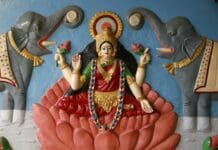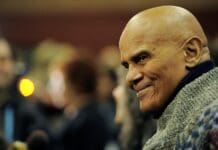Early coverage of Pope Leo XIV has explored the first American pontiff’s Chicago upbringing, as well as the many years he spent in Peru, first as a missionary and then as a bishop.
Genealogist Jari Honora broke the story of the pope’s ancestors’ connection to the Creole of color community in New Orleans. A family historian at the Historic New Orleans Collection’s Williams Research Center, Honora has given research presentations to my graduate students and consulted with me with on own work. In his research on Leo’s lineage, he was also able to find several official documents that list Haiti as the birthplace of his maternal grandfather, Joseph Norval Martinez.
The pope’s Creole lineage in Louisiana is interesting enough. But many commentators have strained to make sense of the link to Haiti, if they mention it at all.
As an expert in 19th-century Haiti, I study the period during which Leo’s ancestors likely traveled between Haiti and New Orleans before migrating to Chicago. Their story is part of a broader American story of race, citizenship and migration.
It’s worth noting that Leo’s genealogy is not entirely straightforward.
At least one record indicates Joseph Norval as having been born in Louisiana. And a 1910 census seems to reinvent the family lineage: Martinez is now “Martina,” Joseph’s birthplace is “S. Domingo,” and he is supposedly Maltese.
Nevertheless, far more documents – numerous census records as well as his marriage certificate – identify Martinez’s place of birth as Haiti. An 1866 passenger list for a ship bound for New Orleans from Haiti, despite some inconsistencies, does indeed appear to list members of the Martinez family, including his father and three siblings.
Just because Leo’s grandfather was born in Haiti, it didn’t mean he was Haitian. Instead, he belonged to a class of people in New Orleans known as Creoles of color.
It’s important to understand the historical complexity of the Creole identity in New Orleans and in Louisiana, and its continued significance today.
The descriptor “Creole of color” is somewhat anachronistic; it emerges at the end of the 19th century in Louisiana to categorize the descendants of a historically subordinate class known as free people of color, or “gens de couleur libres” in French.
It has its origins in the tripartite racial order of the French and Spanish colonial periods in the Americas, when authorities created a hierarchy of legal classes: enslaved people, free people of African descent, and white people.
In theory, free people of color encompassed a range of people. It could describe formerly enslaved people; people who had never been enslaved; people born in Africa; or people with extended, mixed-race American families.
In 19th-century Louisiana, the term generally referred to people of mixed racial ancestry who were born with free status, though at varying degrees of removal from slavery. They generally spoke French and were Catholic.
Though they were subject to repressive laws and could never become citizens and gain the right to vote, free people of color could own, inherit and sell property, including enslaved people. Most worked as artisans and shopkeepers, and a handful became quite wealthy through trade and real estate.
The Martinez family fits squarely within this community.
Census records from 1850 list Jacques Martinez – Joseph Norval Martinez’s father and Leo’s maternal great-grandfather – as a tailor and modest property owner in New Orleans. They were never enslaved but do not appear to have been enslavers, either.
So why was Joseph Norval Martinez born in Haiti?
At some point, his parents probably felt they had to leave New Orleans.
Despite their relative prosperity, free people of color in Louisiana and throughout the United States were being subjected to increasing legal restrictions, repression and violence in the years leading up to the Civil War.
This situation worsened in the 1840s and ‘50s, as white Southerners worked to further restrict citizenship and rights along hard racial lines. The 1857 Dred Scott Supreme Court decision affirmed that any people descended from Africa, including free people of color, had no right to citizenship.
For those who remained in the South, the outbreak of the Civil War in 1861 would have made life even more difficult.
In the first half of the 19th century, many free people of color in Louisiana emigrated to France. But the two main options in the 1860s were Haiti and Mexico.
However, at the time of the Martinez family’s departure, Mexico was embroiled in conflict with France. Haiti, meanwhile, was crafting an ambitious plan to attract immigrants.
After the 1804 Haitian Revolution – the uprising against French colonizers that led to the creation of Haiti – the nation became the first in the world to permanently ban slavery. For this reason, many people of color viewed Haiti as a beacon of freedom and equality.
Indeed, Haiti long promoted itself as a free soil republic: Any person with African descent would enjoy freedom and, eventually, Haitian citizenship. Several Haitian presidents staged immigration campaigns to attract enslaved and formerly enslaved laborers from the United States.
In response to worsening conditions for people of color in the U.S., Haitian President Fabre Geffrard launched a particularly ambitious campaign, setting up Haitian Emigration bureaus and staffing them with agents in New York, Boston, New Orleans and other major cities. Louisiana newspapers advertised Geffrard’s immigration plan, which included land concessions for families and individuals. Geffrard’s focus was on attracting agricultural laborers – not the kind of work the Martinez family would likely be enticed to take on. Still, skilled artisans were welcomed as immigrants.
It was within this context that the Martinez family probably departed New Orleans for Haiti. At present there is scant information about their voyage, but the journey would have echoed many family histories of migration from Louisiana to Haiti in the 1860s.
Based on my study of census and notarial archives, it appears the Martinez family left sometime after the birth of daughter Adele in New Orleans in December 1861 and before the birth of Joseph Norval in Haiti in 1864.
The Martinez family didn’t stay in Haiti long.
According to the passenger list, they returned to New Orleans in February 1866.
As was the experience for many émigrés to Haiti, they may have found the conditions difficult. It’s also possible that the successes of wartime Reconstruction in Louisiana encouraged them to reestablish their lives in New Orleans.
They returned to a state transformed by the abolition of slavery. Free people of color were at the forefront of the fight for civil rights and key architects behind a progressive, egalitarian state constitution that called for equal access to education for all citizens.
The Martinez children likely benefited – albeit briefly – from that provision. The 1870 census records show them all enrolled in school: Michel (14), Girard (12), Adele (9) and young Joseph Norval (6).
They would also witness the violent backlash to Reconstruction, which was especially intense in Louisiana. In 1866, a white mob laid siege to those attempting to amend the state’s constitution to enfranchise Black voters, in what became known as the Mechanics Institute Massacre. In the ensuing years, the state was gripped by ever more violence.
Joseph Norval Martinez married Louise Baquié in 1887, and they went on to have six children, all girls, in New Orleans. He worked as a cigar maker – a common enterprise for free men of color during the period – and later as a clerk.
The family was subjected to increasing segregation with the Separate Car Act, an 1890 Louisiana statute that separated train cars by race. The Supreme Court went on to uphold the Louisiana statute in 1896, enshrining the “separate but equal” doctrine throughout the South.
Martinez and Baquié remained in New Orleans until 1910, at which point they joined the millions of other Black Americans who migrated from the South to the North and the West in the early decades of the 20th century, in what became known as the Great Migration. A significant portion, including Martinez and Baquié, ended up in Chicago.
Their youngest daughter, Mildred Anges Martinez – Leo’s mother – was born there.
Joseph Norval Martinez’s census records tell a complex story about the history of race in the U.S. Prior to 1900, he is listed as “m” for “mulatto.” In the 1900 census, he is listed as Black. And then in the 1910 census, he is listed as white.
The Martinez family could not dictate the racial descriptors assigned to them in the census, but they had some claim over birthplace and lineage. Against the backdrop of segregation, disenfranchisement and violence, Martinez appears to have claimed a lineage – Maltese – that the 1910 census categorized as white.
It is this – and so much more – that makes theirs a truly American story.
One thing we do know: Martinez reverted back to his original lineage after he and his family settled in Chicago. The 1920 census lists Martinez’s birthplace of record as Haiti.
This article is republished from The Conversation, a nonprofit, independent news organization bringing you facts and trustworthy analysis to help you make sense of our complex world. It was written by: Chelsea Stieber, Tulane University
Read more: Inside the Kingdom of Haiti, ‘the Wakanda of the Western Hemisphere’ ‘The pope is Peruvian!’ How 2 decades in South America shaped the vision of Pope Leo XIV 200 years ago, France extorted Haiti in one of history’s greatest heists – and Haitians want reparations
Chelsea Stieber does not work for, consult, own shares in or receive funding from any company or organization that would benefit from this article, and has disclosed no relevant affiliations beyond their academic appointment.













